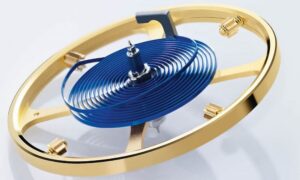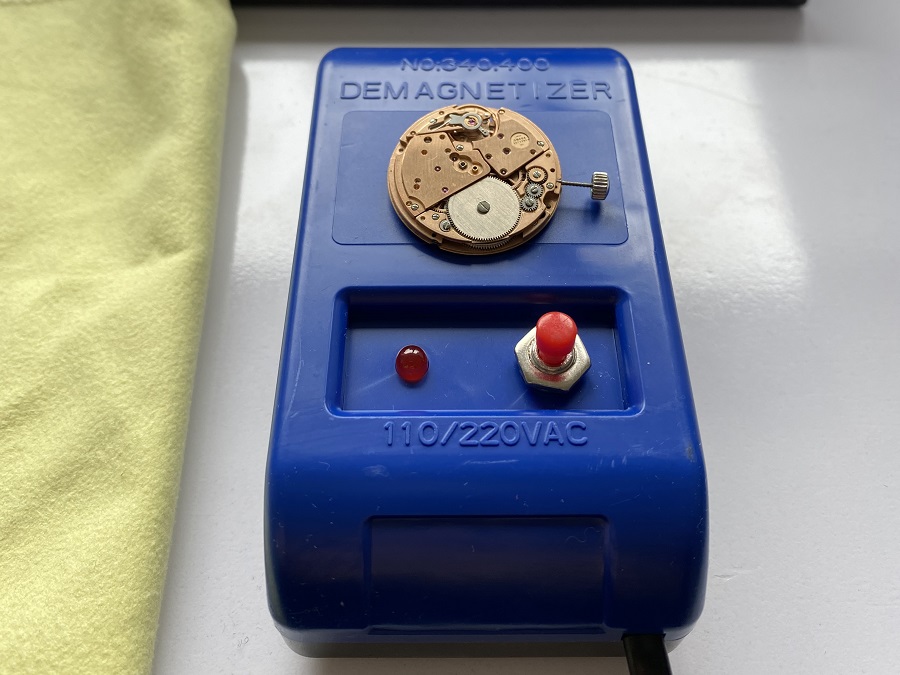What Is Magnetism In Watches?
Magnetism is a phenomenon we are all familiar with. But did you know certain household items produce a small magnetic field themselves, for example, fridges, tvs and microwaves. Luckily the strength of a magnetic field decreases over distance, however, it’s still important not to leave your watch lying near these devices as it is possible that they will disrupt the timekeeping.
The type of magnetism in watches is referred to as ‘paramagnetism’, this is because the watch responds to the magnetic field and does not retain its magnetism indefinitely. When introduced to a magnetic field, the unpaired electrons in the metal will re-organize themselves to face the same direction, making the object magnetised.
What To Do If You Think Your Watch Is Magnetised
If you think your watch is magnetised, don’t panic, as a watch can become demagnetized. This can be done with a small device rightly called a demagnetizer, which emits a reverse field to neutralise the magnetized component. This will spin the electrons inside the metal so they don’t align therefore removing the magnetism.
Magnetism In Mechanical Watches
In a mechanical watch, the risk for magnetism is high because so much of the watch is metal, particularly steel which contains iron (a ferrous metal). Many of the components can become affected by a magnetic field, causing the watch to run slow, fast or stop altogether.

If your mechanical watch suddenly runs erratic after a period of keeping good time, then there is a good chance it may be magnetised.
A common component of the watch to become magnetised is the hairspring as it is a very delicate string of metal. A sudden magnetic wave can cause two of the hairspring coils to stick together, this will change the effective length of the spring. Changes in the effective length of a spring will change the rate of timing, meaning the watch will run fast or run slow. If you have a suspicion that your watch is magnetised you should take it to your local watchmakers so they can safely use the demagnetizer on your watch.
Magnetism In Quartz Watches
Even though quartz analog watches have less metal components, they can still become magnetised, Quartz watches actually use magnetism! The coil in a quartz watch produces a little magnetic field which drives a magnetic rotor. A magnetic field can tamper with how this works. Mechanical watches are much more susceptible to magnetism than quartz watches but they can still be affected. Usually a quartz watch will go back to usual timing when it is removed from the magnetic field, then the watch just needs to be set right.
If you have a suspicion that your watch is magnetised you should take it to your local watchmakers so they can safely use the demagnetizer on your watch.
Anti-Magnetic Watches
So now you know how a watch can become magnetised and why it can negatively affect watches. But how do you combat something you can’t see with the naked eye without taking it to the watchmakers everytime? Some brands have designed watches to withstand magnetism, known as ‘anti-magnetic’ watches. The most effective way of doing this is to change the design of the watch case to ‘cage’ the movement in so it cannot be affected by magnetic forces. Another way is to actually make the components of the watch out of non-ferrous metals so that magnetic fields have no effect.
The most iconic anti-magnetic watch is the Rolex Milgauss, which was first introduced in 1956. A soft iron cage protects the movement from magnetic fields of up to 1,00 gauss (gauss being the unit of magnetic induction), hence the name Milgauss.
Omega introduced the Aqua Terra 15,000 gauss in 2017, and you can probably guess how much gauss it can withstand. It is a very impressive piece that solves the problem of magnetic fields in the alternative way mentioned before. The watch has a sapphire case back but is still one of the most anti-magnetic watches ever made. The engineers and watchmakers at Omega have been able to swap out components using a non-ferrous clone. Not much information has been presented on how it has been done but we do know a material called ‘Nivagauss’ has been used. Along with a silicone hairspring.
We hope you’ve left this page with a bit more knowledge on magnetism in watches!

